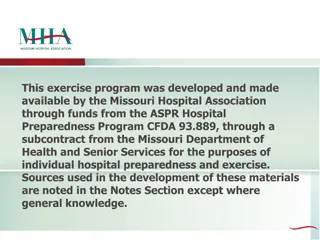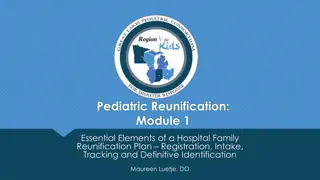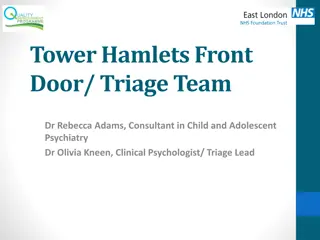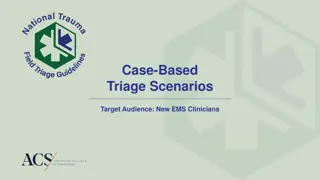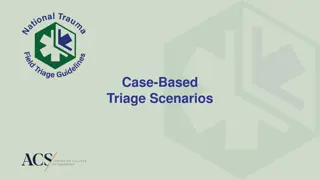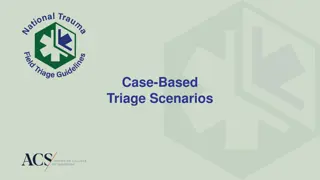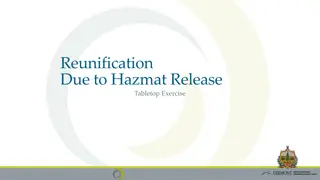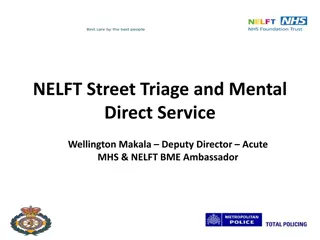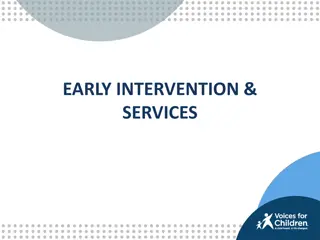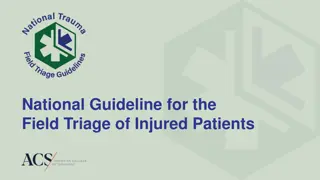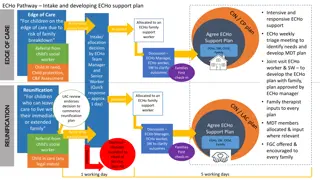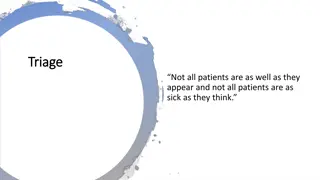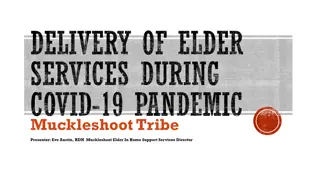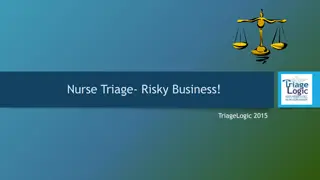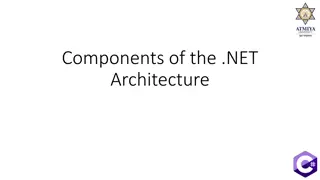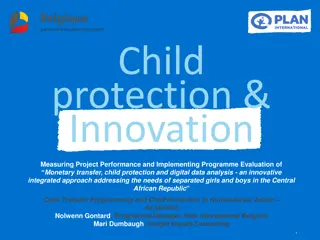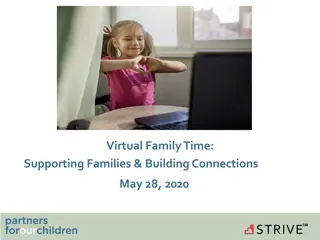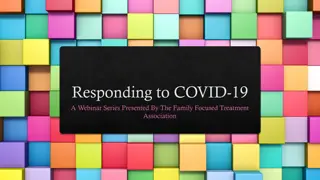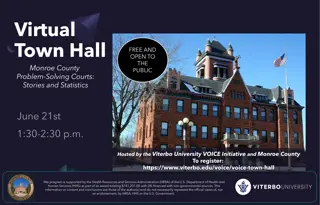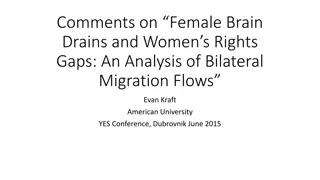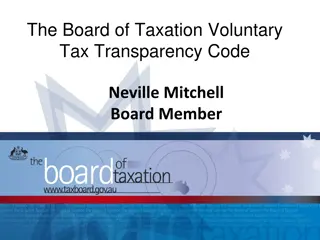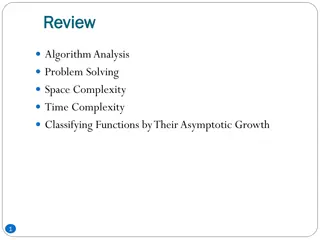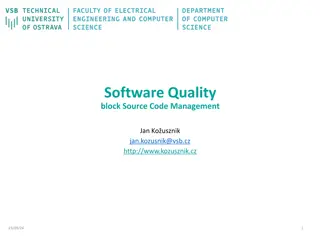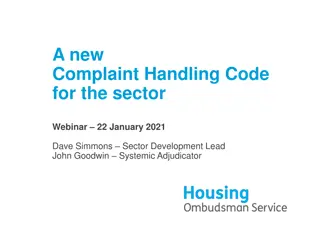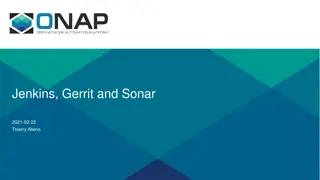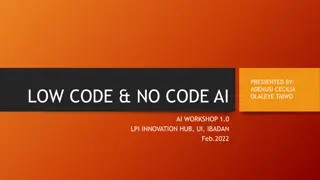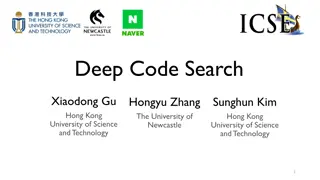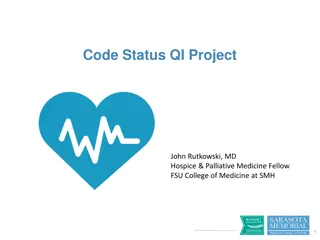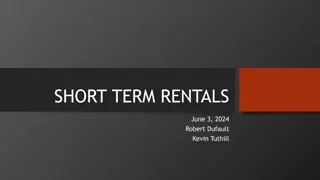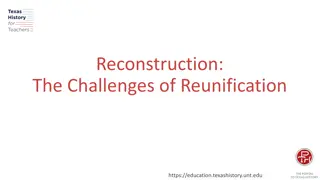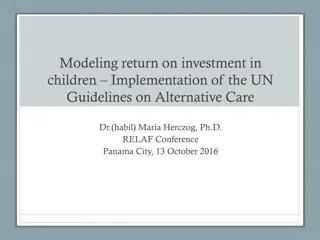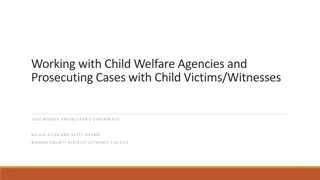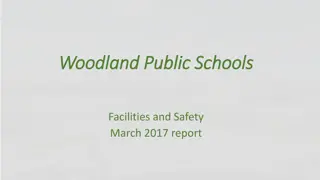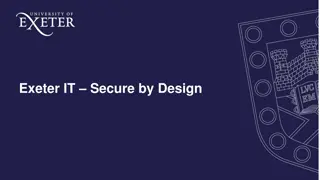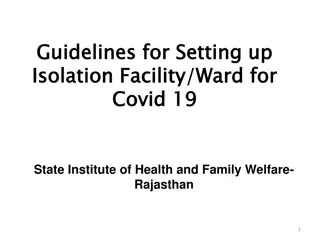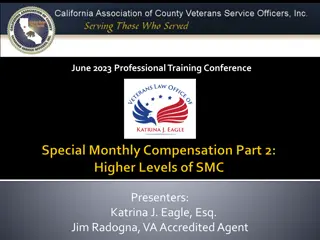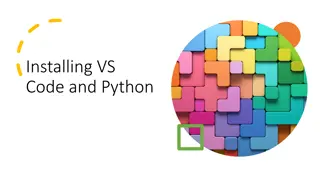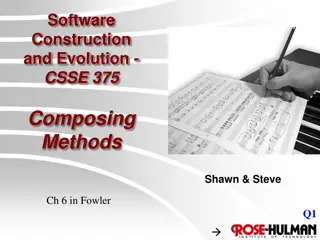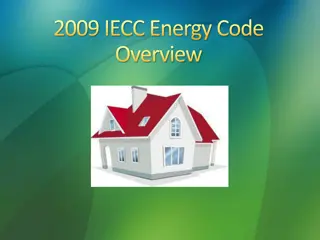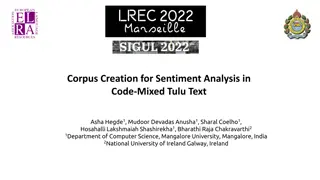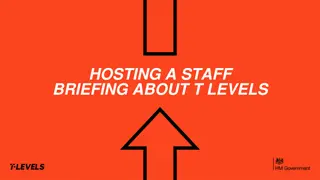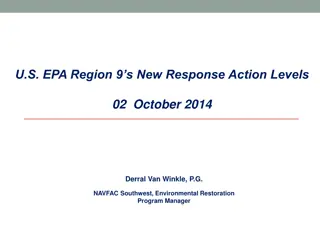Family Reunification Process and Code Triage Levels Overview
The content provides an in-depth look into the Family Reunification Center (FRC) process during large-scale events, code triage levels 1-4, and the basic concept of FRC. It outlines the steps involved in setting up the FRC, assigning roles, assisting families, and coordinating with the Incident Command Center. The FRC's vital role in reuniting family members during crises is emphasized, along with the staff and services involved in its operation.
Download Presentation

Please find below an Image/Link to download the presentation.
The content on the website is provided AS IS for your information and personal use only. It may not be sold, licensed, or shared on other websites without obtaining consent from the author. Download presentation by click this link. If you encounter any issues during the download, it is possible that the publisher has removed the file from their server.
E N D
Presentation Transcript
Family Reunification Review & Practice
Code Triage Levels 1-4 Level 1- An actual or potential event requiring an increased state of readiness. Level 2- Event is impacting normal services and operations Level 3- No longer able to provide reasonable and customary care and services Level 4- Hospital is no longer able to provide services. FRC Response- Level 1- Assess department s current status and be on alert for possible activation of the FRC. Level 2- High likelihood of activation of Small Scale or Large Scale FRC response. Staff should respond according to FRC plan if activation of FRC occurs. Levels 3 & 4- If FRC is activated, staff should respond accordingly.
DCMC Family Reunification Basics By definition the Family Reunification Center is a pre-planned process to receive family members in search of person(s) who they believe has been brought to your hospital during a large scale traumatic or catastrophic event. (Code Triage) After the code triage has been announced the Incident Command Center (ICC) will assess whether or not to activate the Family Reunification Center (FRC). Having persons designated to provide leadership for the FRC and staff to provide additional support is paramount to the success of the FRC. DCMC primarily utilizes Chaplain Services, Child Life, Case Management, Patient Representatives and Volunteer Services to staff the FRC. Other staff can be allocated by the ICC as needed.
How the process should work: 1. Set up FRC, assign roles and notify ICC that FRC is ready for operation. FRC rolling file box will be moved to FRC main location by Patient Access. FRC will begin setting up rooms and assigning roles. Search Team will identify location to set up and begin collecting information when available. 2. ED FRC staff complete forms for each patient with identifying features and Tiger Text to Search Team. 3. Families are directed to the FRC entrance by Wayfinders/Greeters located outside of ED entrance and DCMC Main entrance. FRC registration staff will assist families with completion of a registration form. If possible staff will tiger text a photo of child to the Search Team. 4. Upon completion of forms, families are directed to the Check In table to register and receive a green armband. (Family member should write their name on the armband.) 5. Family member is directed to the gathering room. (Refreshments are available) Room monitors will ensure supplies are adequate.
6. Completed forms from ED and FRC are sent to the Data Search Team who will attempt to locate the patient in Compass and communicating with hospital staff. (ED Forms may be initially sent by Tiger text, but also may need to be photocopied and run to the Search Team.) 7. Runners will work with the registrars to take forms from FRC and ED to the Search Team and run other errands as needed. 8. After confirmation of patient/family match, a Wayfinder will escort the family to reunite them with the patient. In the case of a deceased patient, Wayfinders will coordinate with a chaplain to arrange the plan to inform family and then facilitate viewing if appropriate. 9. If patients cannot be located, families should be updated of the status and the data search team will continue to search for the patient at other hospitals if necessary.
Positions of Responsibility in the Family Reunification Center, DCMC FRC Operations Chief FRC ED Lead FRC ED Assistants Search Team Registrars Check-in Desk Room monitors Runners Wayfinders Phone Bank Team Chaplain Patient representative Discharge Lounge RN
Estimate of Staff needed for each Role FRC Operations Chief-1 (Patient Reps/Chaplain Site Coordinator/CL Manager) FRC ED Lead-1 (Child Life) FRC ED Assistants-5 (Child Life or Labor Pool) Search Team-2 (Ideally one CL and one from Pt Access) Registrars-3 to 5 (One to two Spanish Speaking if possible) Check-in Desk-1to 2 (One Spanish Speaking if possible) Room Monitors-2 Runners-2 Wayfinders-4 (1 Wayfinder/Greeter at ED entrance & 1 Wayfinder/Greeter at Main Entrance) 2 Additional Wayfinders to unite families and patients Phone Bank Team-1 Chaplain-3 Patient representative-2 Discharge Lounge- 1 RN and 2-3 Room Monitors Wayfinders, Registrars, Monitors, Runners, Phone Bank roles can all filled with staff from various departments such as Foundation, Chaplain Services, Patient Representatives, Child Life, CARE Team support staff and Volunteer Services.
Table Top Practice Scenario- Code Triage Level 1: Possibly 10-15 patients arriving with injuries from a gas line explosion near a middle school in Austin What actions are done first? Who is going where? Code Triage Level 2: 22 patients will be arriving from gas line explosion- 3 CAT I s and 6 CAT II s, 13 other additional . ETA 10 minutes What actions are done first? Who is going where? Who are the leads for ED/FRC & Search Team? What role are you assuming?


